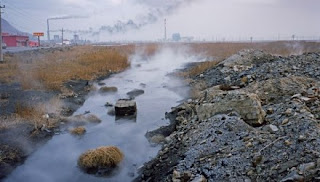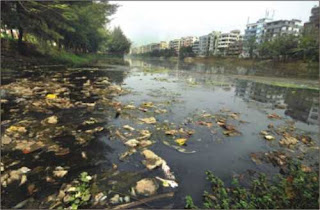Air Pollution
Pollution as a worldwide problem comes from a number of sources.
These sources have grown through the years, and are still increasing over time, as the world develops into a highly industrialized sphere. Unfortunately, technological innovation is partnered with intensifying sources of pollutants.
Air Pollution
Air pollution comes mainly from sources related to technological advances. Vehicles, especially powered by diesel, produce harmful chemicals. Moreover, when these air chemicals come in contact and react with the sunlight,
it forms a pollutant called Ozone (O3). Industries and other products also produce Ozone. At home, stoves and fireplaces create particulate matters as well as dusts from construction sites and roads. The elements called carbon monoxide (CO) and nitrogen dioxide (NO2) comes from things that burn fuel,
whereas sulfur dioxides (SO2) are produced by industrial plants powered by coal and oil. These sources include vehicles, equipments with motor engines, which are usually used for constructions and agriculture, as well as devices present in homes.
Using residential devices will always have their disadvantage, as these will somehow release toxic air contaminants.
These devices may consist of heaters, cooking stoves and dry cleaners.
Water Pollution
Water pollution may come from the direct and indirect introduction of contaminants in bodies of water such as lakes, rives and oceans.
If upon the introduction of harmful substances and nothing is done to clean or treat the area, it will eventually alleviate the problem. The most common sources of water pollution include inappropriate disposal of excretion in sewage and pipes from establishments.
There are some instances wherein water pollution extends from one area to another by the process of water evaporation in the atmosphere and rainfalls, aside from contaminants being carried out by flowing waters in rivers and creeks. In water pollution, an alarming percentage of disease causing pathogens and chemicals is present.
This will also determine the severity of the contamination.
Soil Pollution
A solid source of soil pollution in a certain area, aside from industrial wastes are the actual wastes of humans (human excreta), nuclear wastes that contain radioactive substances, improper disposable of garbage in both residential and commercial area as well as acid rains. When soil pollution occurs,
the nutrients and living organisms (e.g. earthworms) beneficial to the environment as a whole will be destroyed.
Air pollution comes mainly from sources related to technological advances
Other types of pollution, for the most part, affect human beings. An example of this is the light pollution that comes from illumination abuse and light trespasses. Noise pollution which can damage the auditory function of our body is created by high-intensity noise from roadways, sonar and industrial establishments.Visual pollution is frequent for highly industrialized and urban areas where there is an exaggerated construction of power lines, billboards as well as careless disposal of wastes.




